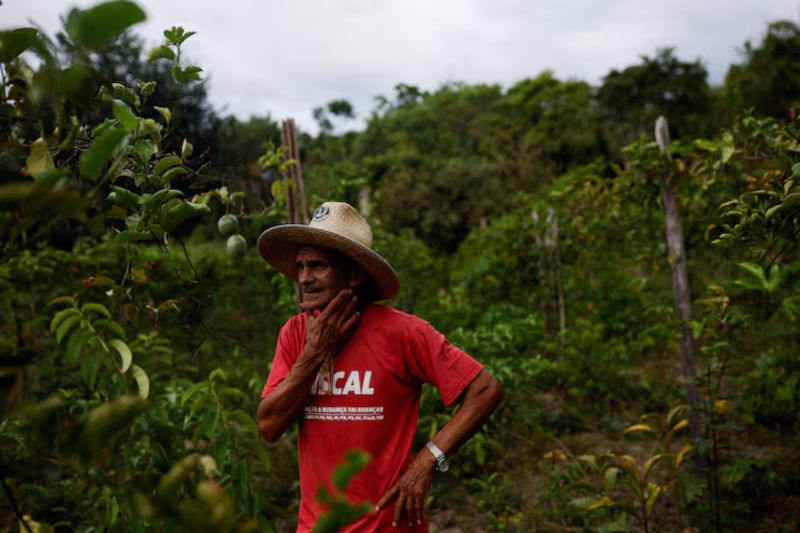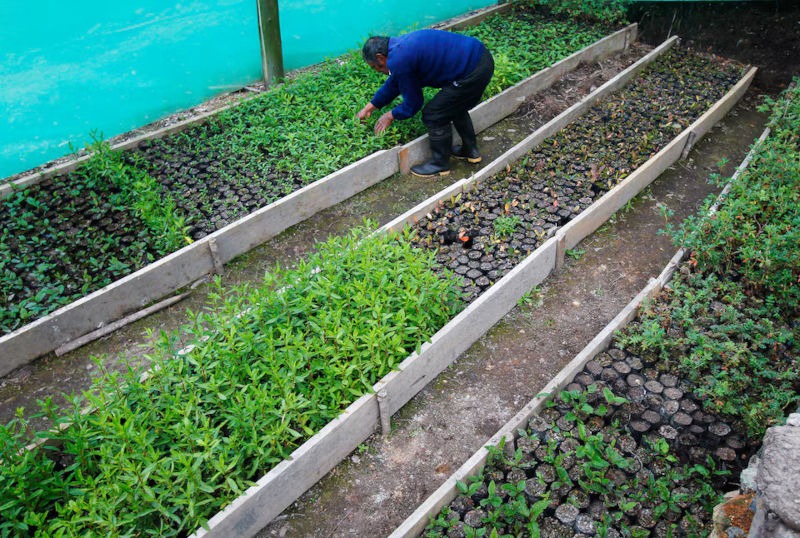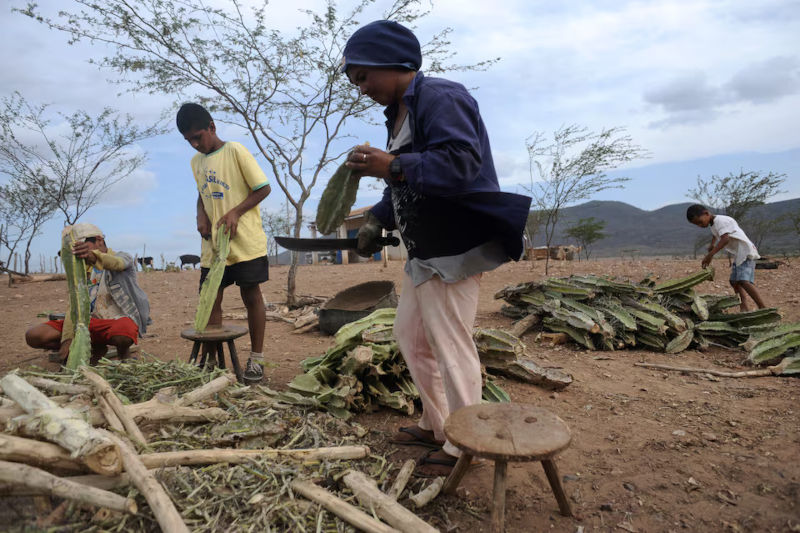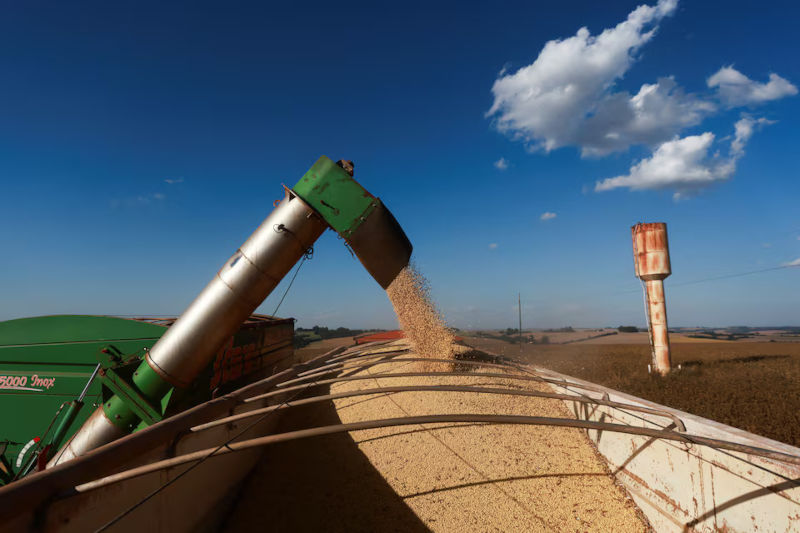
Richard Butler | Exclusive Report by PATRICIA ESPINOSA of REUTERS NEWS | 23RD JUNE, 2025
June 23 – Global climate efforts have focused on decarbonizing energy, transport and industry. But agriculture remains a critical, underfunded part of the solution.
Responsible for nearly 90% of tropical deforestation and a third of total emissions, food systems and agriculture receive less than 5% of climate finance. New research shows that the sector needs annual investments of $1.1 trillion over the next five years to transition to sustainable, resilient food production models that secure employment and achieve the Paris Agreement.
This is one of the challenges facing delegates at the U.N. Climate Change negotiations in Bonn, where I am right now, ahead of the COP30 summit in Brazil. So far, these mid-year, consensus-building sessions have started slow, delaying discussion of the real concerns facing countries on climate. One of these is – how to unlock the finance urgently needed to transform global agriculture?
Agriculture is the bedrock of food and economic security, underpinning livelihoods and diets for billions. It is also increasingly vulnerable to climate disruption. Rising temperatures and extreme weather have cost farmers $3.8 trillion in lost productivity over the past 30 years. Reducing agriculture’s impact and safeguarding food security will require large-scale investment in more sustainable production models.
As one of the world’s leading agricultural exporters, Brazil plays a central role in meeting global food demand. It also hosts some of the planet’s most important carbon sinks and biodiversity reserves, including the Amazon and the Cerrado. Agricultural expansion continues to drive deforestation in these regions, but that link is no longer inevitable.

According to the Brazilian government, the country has more than 100 million hectares of degraded pasture, with 40% suitable for food production and high-productivity forests. Recovering this land often operating at one-third of its productive potential – could meet future global demand for beef and soy without clearing a single additional tree.
Farmers and businesses are already proving that this shift is possible — more productive and increasingly profitable. Proven models such as recovering pastureland, sustainable intensification of cattle ranching, integrated crop-livestock systems and agroforestry can grow output, boost resilience and increase incomes, without further habitat loss.
The technological solutions are there, but the barrier to scaling them across supply chains and regions is lack of finance.
Most agricultural lending today is short-term, expensive and geared toward conventional practices. Rehabilitating degraded land can take seven to 10 years to pay back. For these novel approaches, tenors are too short, rates are too high. Currency risk deters foreign capital. Collateral requirements often exclude smaller producers.
I’ve seen these challenges firsthand, in my home country of Mexico. To scale climate-smart agriculture, Brazil will need an estimated $2 billion in catalytic capital by 2030, which would allow it to unlock $8 billion in commercial finance.
This flexible, risk-tolerant finance – including first-loss equity, subordinated debt, guarantees and concessional terms – is essential to de-risk early investments and attract mainstream capital, especially when returns take longer to materialize.
New funds are emerging to meet this need. One of the most promising is the Catalytic Capital for the Agriculture Transition (CCAT), which aims to raise $200 million by COP30 and leverage an additional $800 million in commercial finance.

By sharing risk, the fund can improve lending terms for farmers and help scale sustainable soy and cattle production on already-cleared degraded land in Brazil’s Amazon and Cerrado – reducing pressure on the forest frontier.
Backed by the Gordon and Betty Moore Foundation, and managed by VOX Capital with advice from The Nature Conservancy, CCAT will work with banks and supply chain companies to co-finance a ready pipeline of projects through the Innovative Finance for the Amazon, Cerrado and Chaco platform.
It expects to restore or protect more than 500,000 hectares and support 1,200 producers. Its goal by 2030 is to leverage $2.5 billion in commercial capital, positively impacting 1.25 million hectares and thousands more farmers.
This ambitious approach to catalytic capital, I believe, could serve as a model for transitions in other producer countries across Latin America and beyond. It offers the kind of scalable solution needed to mobilize climate finance in critical sectors, where early-stage interventions yield outsize environmental and social returns.
Crucially, in my view, it also brings equity: supporting underserved producers and aligning with a just transition to sustainable production, distribution and consumption.
Efforts to recover already-cleared land are part of a broader constellation of climate finance innovations aimed at halting deforestation, including restoring natural landscapes and preserving standing forests. A recent example is the Tropical Forest Forever Facility, a new investment vehicle spearheaded by the Brazilian government and led by Global South tropical forest countries.

So, some catalytic finance is happening. But the current pace is far too slow to meet climate goals or shield countries from the escalating risks of climate breakdown.
We need governments, development finance institutions and philanthropies to massively expand the supply of concessional guarantees, subordinated debt and anchor equity to accelerate food system transformation. Financial institutions, in turn, must help scale uptake by structuring innovative solutions and investing in the live pipeline of investable opportunities.
The coming year could be decisive. Countries’ commitments under the U.N. Climate Change process have already lowered projected global temperature rise, proving that multilateralism works.
Yet the COP process faces one of its most difficult tests this year, and strong leadership is needed. Rather than engage in prolonged procedural debates in Belem later this year, countries need to engage constructively, and seek concrete solutions and projects.
In the case of sustainable agriculture, unlocking catalytic capital, quickly and at scale, will turn pilot projects into system-wide change – in Brazil and far beyond.





